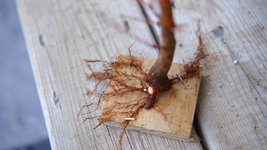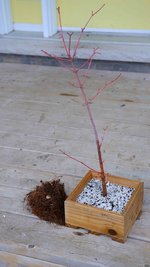The Warm Canuck
Shohin
I just finished root work on this nursery JM. It's the first time I've worked the roots, so after I was done there's hardly anything left. I feel like I need to take some off the top of the tree to balance how much roots I removed, I'm worried it won't have the resources now to balance the canopy. Is my thinking right? Should I take half the top of the tree off? I realize it will slow down growth but I like to be cautious.




